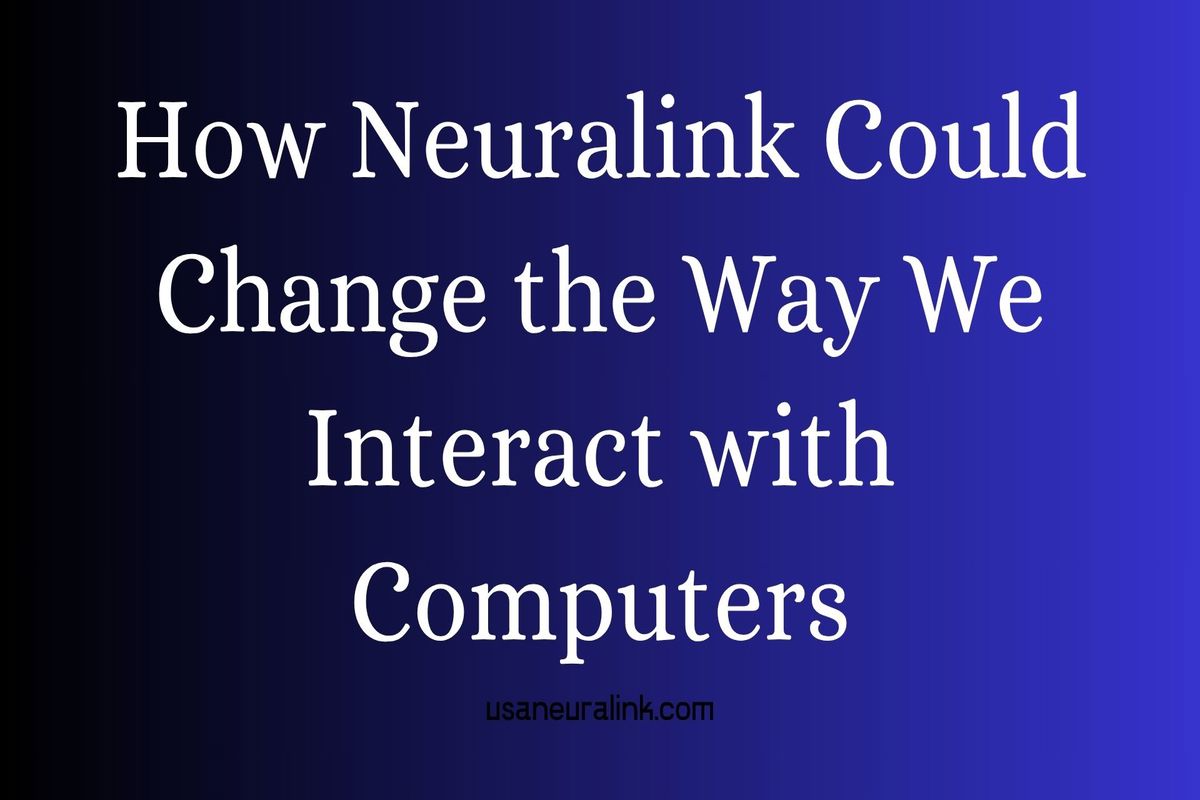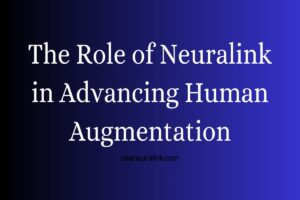The Role of Neuralink in Advancing Human Augmentation
The Role of Neuralink in Advancing Human Augmentation
Imagine a world where your brain can directly interact with computers, enhancing your memory, speeding up your learning, or even restoring lost abilities. This isn’t science fiction—it’s the future that Neuralink, a pioneering company founded by Elon Musk, is working to create. Neuralink’s mission to develop advanced brain-computer interface (BCI) technology is pushing the boundaries of human augmentation, offering a glimpse into how we might evolve as a species. In this blog post, we’ll explore the role of Neuralink in advancing human augmentation, diving into its technology, potential applications, ethical considerations, and what it means for our future. Let’s embark on this fascinating journey into the intersection of neuroscience and innovation.
What is Neuralink and How Does It Work?
Neuralink is a neurotechnology company focused on creating implantable brain-computer interfaces. But what exactly does that mean? At its core, Neuralink aims to connect the human brain directly to computers, allowing seamless communication between our minds and digital systems. The company’s flagship innovation is a small, implantable device—often called the “Link”—that integrates with the brain’s neural network.
This device uses tiny electrodes, thinner than a human hair, to record and stimulate brain activity. These electrodes are inserted into the brain using a sophisticated robotic surgeon, ensuring precision and minimal invasiveness. Once implanted, the Link can transmit data wirelessly to external devices, enabling applications ranging from medical treatments to cognitive enhancements. By bridging the gap between biology and technology, Neuralink is paving the way for a new era of human augmentation.
The concept of brain-computer interfaces isn’t entirely new, but Neuralink’s approach stands out due to its ambition and scale. Unlike earlier BCIs, which were often bulky and limited in scope, Neuralink’s technology is designed to be scalable, with thousands of electrodes capable of interacting with millions of neurons. This leap forward could unlock unprecedented possibilities for human enhancement.

The Promise of Human Augmentation
Human augmentation refers to technologies that enhance our physical, cognitive, or sensory capabilities. From prosthetics that restore mobility to wearables that track health, augmentation is already part of our lives. Neuralink, however, takes this concept to the next level by targeting the brain—the control center of human experience.
One of Neuralink’s most immediate goals is to address neurological disorders. Imagine a world where conditions like paralysis, Parkinson’s disease, or severe depression could be treated by directly interfacing with the brain. For example, Neuralink’s technology could help individuals with spinal cord injuries regain control of their limbs by bypassing damaged neural pathways. Early experiments, such as enabling a monkey to play video games with its mind, demonstrate the potential for precise neural control.
Beyond medical applications, Neuralink’s vision extends to cognitive enhancement. Could we one day download knowledge directly into our brains, like learning a new language in minutes? Or communicate telepathically by transmitting thoughts via a Neuralink implant? While these ideas sound futuristic, they align with the company’s long-term goal of merging human intelligence with artificial intelligence (AI), creating what Elon Musk calls a “symbiosis” between humans and machines.
Real-World Applications of Neuralink’s Technology
Neuralink’s brain-computer interface technology has a wide range of potential applications. Let’s break down some of the most exciting possibilities:
Medical Breakthroughs
Neuralink’s primary focus is on medical applications, particularly for treating neurological conditions. For individuals with paralysis, the Link could restore motor function by translating brain signals into actions, such as moving a robotic limb or typing on a computer. Early human trials, announced in 2024, are exploring these possibilities, with initial focus on patients with quadriplegia or ALS.
The technology also holds promise for mental health. By stimulating specific brain regions, Neuralink could offer new treatments for depression, anxiety, or PTSD. Unlike traditional therapies, which often rely on medication with side effects, BCIs could provide targeted interventions with greater precision.
Cognitive Enhancement
Beyond medicine, Neuralink’s technology could enhance cognitive abilities. Imagine boosting your memory, improving focus, or accelerating problem-solving skills. For students, professionals, or creatives, this could mean a significant leap in productivity. The idea of “upgrading” our brains raises intriguing questions about how we define intelligence and human potential.
Human-AI Integration
Elon Musk has often spoken about the need to keep pace with AI’s rapid advancement. Neuralink’s ultimate goal is to create a direct interface between human brains and AI systems. This could enable us to access vast amounts of information instantly or even merge our consciousness with digital networks. While this vision is still speculative, it underscores Neuralink’s ambition to redefine what it means to be human in an AI-driven world.
Ethical Considerations of Brain-Computer Interfaces
As exciting as Neuralink’s technology is, it raises profound ethical questions. Human augmentation through BCIs could transform society, but it also poses risks that we must carefully navigate.
Privacy and Security
When your brain is connected to a digital device, who controls the data? Neuralink’s implants collect sensitive information about your thoughts and neural activity. Ensuring the security of this data is critical to prevent misuse, such as unauthorized access or manipulation. Robust encryption and strict privacy protocols will be essential to protect users.
Inequality and Access
Another concern is accessibility. Will Neuralink’s technology be available only to the wealthy, creating a new divide between those who can afford cognitive enhancements and those who cannot? Ensuring equitable access to human augmentation technologies will be crucial to avoid exacerbating social inequalities.
Identity and Autonomy
What does it mean to be human when your brain is augmented by technology? Neuralink’s vision of merging humans with AI raises questions about autonomy and identity. If our thoughts can be influenced or enhanced by external systems, where do we draw the line between human and machine? These philosophical questions will shape the societal impact of Neuralink’s work.
How Neuralink Fits Into the Future of Human Enhancement
Neuralink is just one piece of a larger puzzle in the field of human augmentation. Other companies, like Synchron and Blackrock Neurotech, are also developing BCIs, while advancements in robotics, gene editing, and AI are expanding the possibilities for enhancement. What sets Neuralink apart is its bold vision and high-profile leadership, which have brought significant attention to the field.
In the coming decades, we may see a convergence of these technologies, creating a world where humans are not only healthier and smarter but also deeply integrated with digital systems. Neuralink’s work could accelerate this shift, making brain-computer interfaces a cornerstone of human evolution.
For now, Neuralink is focused on proving its technology in medical applications, but the long-term implications are vast. As the technology matures, it could redefine education, work, and communication. Imagine a classroom where students learn complex subjects instantly via neural downloads or a workplace where collaboration happens through direct brain-to-brain communication. These possibilities, while distant, highlight the transformative potential of Neuralink’s mission.
Optimizing Your Understanding of Neuralink with Yoast SEO
If you’re running a WordPress site and want to share insights about Neuralink and human augmentation, tools like Yoast SEO can help your content reach a wider audience. By targeting long-tail keywords like “Neuralink human augmentation” or “brain-computer interface technology,” you can improve your search engine rankings. Here are a few tips to optimize your blog post with Yoast SEO:
-
Focus Keyphrase: Use a primary keyword like “Neuralink human augmentation” in your title, meta description, and throughout the content. Yoast will analyze its distribution to ensure it’s used naturally.
-
Readability: Keep paragraphs short (under 150 words) and use transition words like “however,” “for example,” and “in addition” to improve flow, as Yoast’s readability analysis recommends.
-
Meta Description: Craft a compelling meta description (under 160 characters) that includes your focus keyphrase. For example: “Explore how Neuralink’s brain-computer interface technology is revolutionizing human augmentation and shaping the future.”
-
Internal Linking: Link to related posts on your site, such as articles about AI or neuroscience, to boost SEO and keep readers engaged.
-
Headings: Use one H1 tag for the title and H2/H3 tags for subheadings, as done in this post, to structure content clearly for both readers and search engines.
By following these guidelines, you can ensure your content is both reader-friendly and optimized for search engines, maximizing its impact.
The Road Ahead for Neuralink and Humanity
Neuralink’s journey is just beginning, but its potential to advance human augmentation is undeniable. From restoring lost abilities to unlocking new cognitive frontiers, the company’s brain-computer interface technology could reshape how we live, work, and think. However, its success will depend on addressing technical challenges, ethical concerns, and societal implications.
As we stand on the cusp of this technological revolution, it’s worth reflecting on what human augmentation means for our future. Will we embrace these advancements as a natural step in our evolution, or will we approach them with caution, mindful of the risks? Only time will tell, but one thing is certain: Neuralink is leading the charge toward a world where the boundaries between human and machine blur, opening up possibilities we’ve only begun to imagine.
What do you think about Neuralink’s vision for human augmentation? Are you excited about the possibilities, or do you have concerns about the ethical implications? Share your thoughts in the comments below, and let’s continue the conversation about the future of human enhancement.
Share this content:






















Post Comment